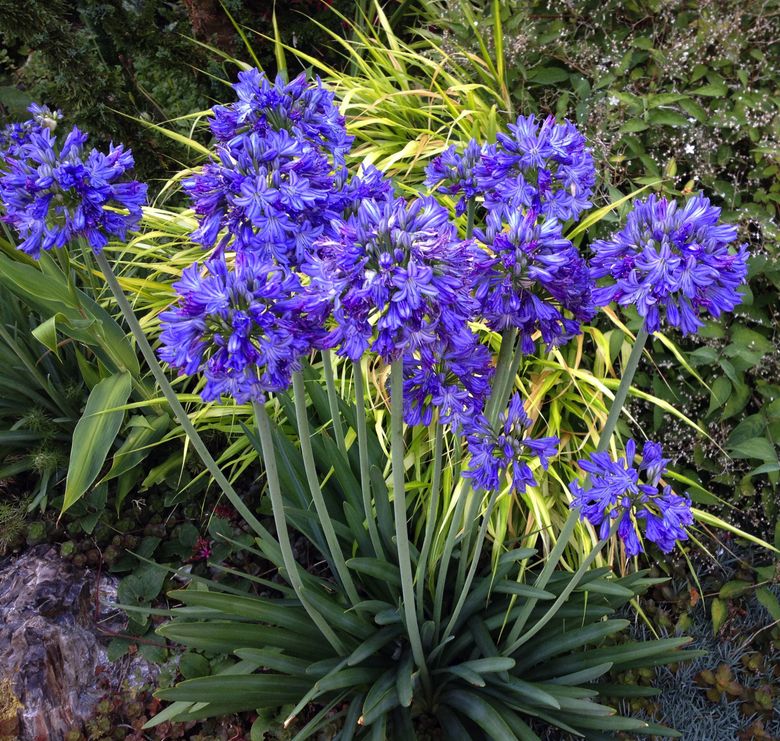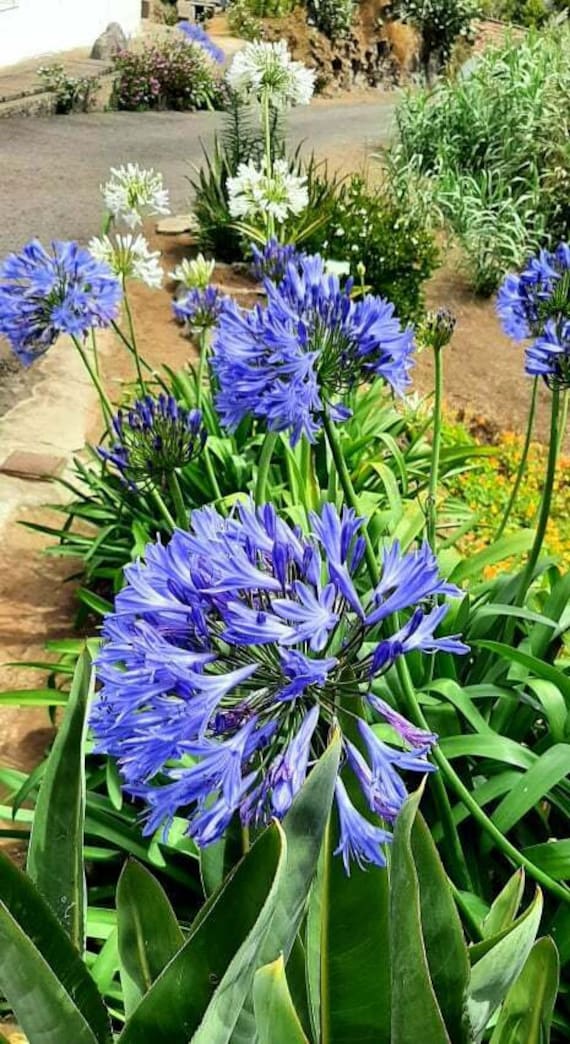Magnificent Agapanthus: Enhancing Your Garden's Elegance
Magnificent Agapanthus: Enhancing Your Garden's Elegance
Blog Article
Unleashing the Secret to Effective Agapanthus Cultivation: Tips and Techniques for a Flourishing Garden
In the world of horticulture, growing agapanthus successfully calls for a critical method that encompasses various facets of plant care. By understanding the subtleties of agapanthus farming, one can develop an environment where these plants grow and grow abundantly.
Growing Agapanthus: Ideal Practices
When planting Agapanthus, appropriate soil prep work is crucial for guaranteeing effective development and advancement of these stunning flowers. Agapanthus, frequently understood as Lily of the Nile or African lily, grows in well-draining soil with a somewhat acidic to neutral pH degree - Agapanthus. Before growing, it is important to amend hefty clay soils with raw material such as compost or peat moss to enhance drainage and supply essential nutrients for the plants
To grow Agapanthus, select a location that receives complete sunlight to partial shade, as this will certainly promote healthy and balanced development and plentiful blooming. Dig a hole twice the size of the plant's root ball and put the Agapanthus at the exact same depth it was formerly expanding. Carefully backfill the hole with dirt, weighing down firmly to eliminate any type of air pockets around the origins.
Water the recently planted Agapanthus extensively and proceed to keep the dirt equally moist, especially throughout the plant's energetic expanding season. Agapanthus. Using a well balanced plant food once a month can even more sustain the plant's growth and blooming. By adhering to these finest methods for growing Agapanthus, you can create a stunning display of these exciting blossoms in your garden
Suitable Soil Conditions for Agapanthus
For optimum growth and growing success of Agapanthus plants, ensuring the dirt problems are excellent is vital. Agapanthus favors soil that is rich in nutrients, so incorporating a well balanced fertilizer during the growing period can advertise healthy and balanced growth and vibrant flowers.

Watering and Feeding Tips
To make sure healthy development and dynamic flowers, correct watering and fertilizing strategies are important for successful Agapanthus growing. Agapanthus plants gain from regular watering, particularly throughout the expanding season. It is suggested to water deeply when a week, guaranteeing the soil is moist however not soaked. Throughout warm weather condition or in pots, even more regular watering may be needed to stop the soil from drying out completely.
When it involves fertilizing Agapanthus, a balanced fertilizer with equal components nitrogen, phosphorus, and potassium can be applied in the spring to advertise healthy development and flowering. Slow-release plant foods are ideal for giving nutrients progressively over an extensive period. Avoid over-fertilizing, as this can bring about too much vegetation development at the cost of flowers.
Additionally, including organic issue like garden compost right into the soil can improve nutrient degrees and improve soil structure, aiding in the general health of the Agapanthus plants. By adhering to these watering and fertilizing ideas, gardeners can guarantee their Agapanthus plants thrive and produce magnificent display screens of blossoms.
Trimming and Deadheading Strategies
Appropriate pruning and deadheading methods play an essential function in maintaining the health and looks of Agapanthus plants, complementing the important methods of watering and feeding for successful growing. Pruning Agapanthus involves eliminating invested blossom heads, yellowing or dead leaves, and general shaping of the plant to advertise much better growth. Deadheading, the procedure of getting rid of discolored blossoms, not only improves the plant's look however also motivates additional growing.
When deadheading Agapanthus, it is suggested to snip off the blossom stem at the base making use of sharp, tidy shears. This process redirects the plant's power from seed manufacturing back into root and foliage development, promoting a healthier and much more robust plant. Regular deadheading can expand the growing duration of Agapanthus and avoid self-seeding, which can cause overcrowding.
In terms of pruning, Agapanthus generally advantages from a light trim after blossoming to clean the plant and motivate fresh development. Reducing the spent blossom stems and getting rid of any damaged or dead foliage assists maintain the plant's vigor and overall appearance. However, it is essential to stay clear of reducing right into the crown of the plant, as this can deteriorate its click to read more health and wellness.

Protecting Agapanthus From Vermins and Diseases
Applying reliable bug and condition administration techniques is crucial to securing the health and wellness and vigor of Agapanthus see this website plants in cultivation. One typical pest that influences Agapanthus is the Agapanthus borer, a caterpillar that passages into the plant, creating damages to the fallen leaves and blossoms.
In enhancement to parasites, Agapanthus are prone to conditions such as origin rot and fungal leaf spots. By remaining vigilant and attending to bug and illness issues quickly, garden enthusiasts can help their Agapanthus grow and flourish.

Final Thought
Finally, successful cultivation of agapanthus calls for appropriate planting strategies, suitable soil problems, appropriate watering and feeding, regular trimming and deadheading, and defense from insects and conditions. By adhering to these ideas and methods, garden enthusiasts can make certain a prospering yard filled up with gorgeous agapanthus flowers. Agapanthus. Remember to preserve consistent care and focus to information to advertise the wellness and longevity of these magnificent plants
When growing Agapanthus, appropriate dirt preparation is vital for ensuring successful development and development of these attractive blossoms.Water the newly planted Agapanthus completely and continue to maintain the soil evenly damp, specifically during the plant's active expanding season.For optimum development and flowering success of Agapanthus plants, making sure the soil conditions are optimal is vital. When growing or transplanting Agapanthus, make sure the dirt is well-prepared to offer the essential weblink structure for the plants to establish themselves effectively. One common pest that impacts Agapanthus is the Agapanthus borer, a caterpillar that passages into the plant, causing damage to the blossoms and leaves.
Report this page